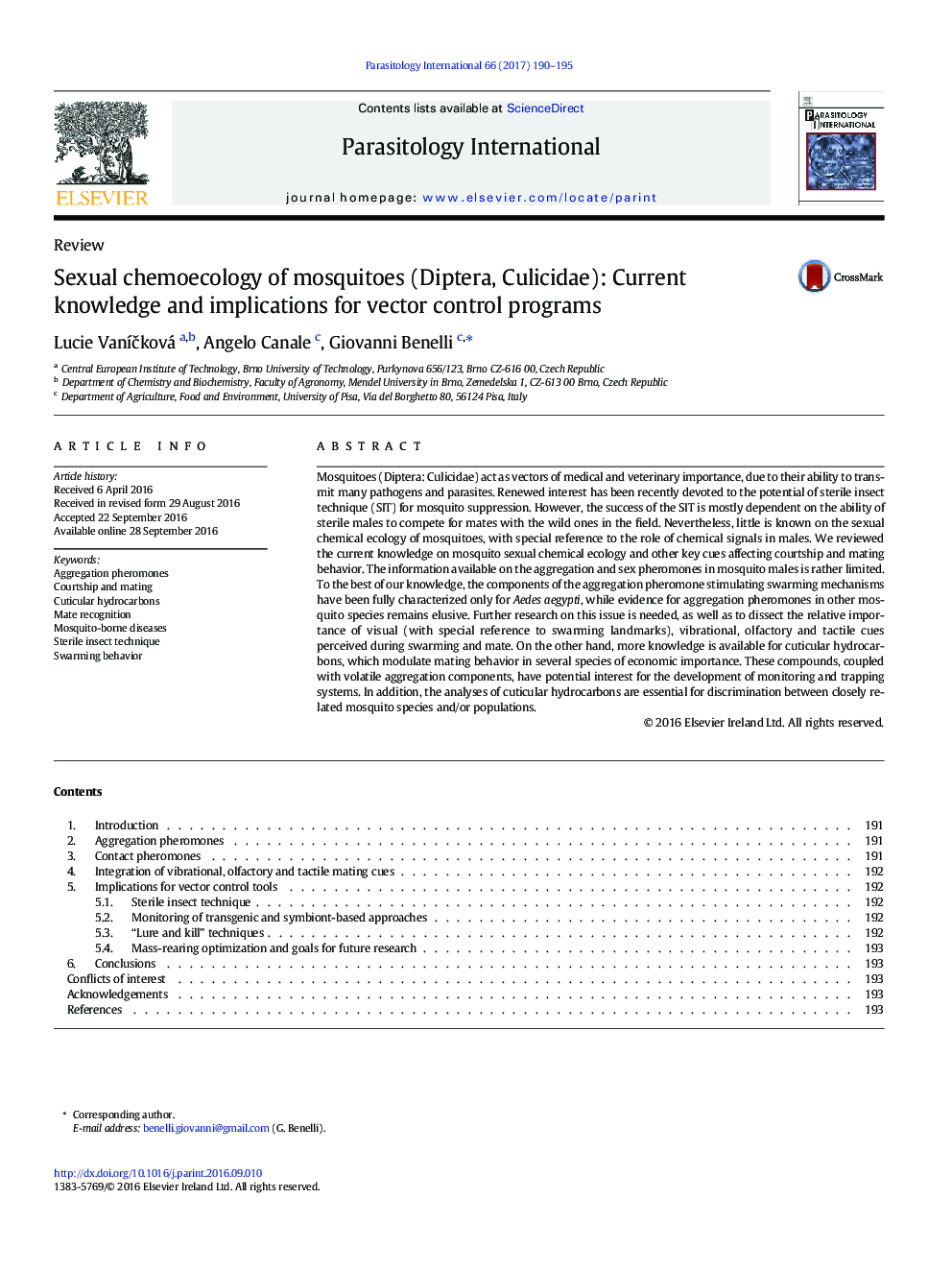| کد مقاله | کد نشریه | سال انتشار | مقاله انگلیسی | نسخه تمام متن |
|---|---|---|---|---|
| 5674156 | 1408219 | 2017 | 6 صفحه PDF | دانلود رایگان |

- Little is known on the sexual chemoecology of mosquito vectors, with special reference to males.
- Aggregation pheromone (APs) stimulating swarming mechanisms have been fully characterized only for Aedes aegypti.
- Cuticular hydrocarbons (CHs) modulate mating behavior in Culicidae species of economic importance.
- APs coupled with CHs have potential interest for the development of monitoring and trapping systems.
- Further research dissecting the relative importance of physical and chemical swarming and mating cues is needed.
Mosquitoes (Diptera: Culicidae) act as vectors of medical and veterinary importance, due to their ability to transmit many pathogens and parasites. Renewed interest has been recently devoted to the potential of sterile insect technique (SIT) for mosquito suppression. However, the success of the SIT is mostly dependent on the ability of sterile males to compete for mates with the wild ones in the field. Nevertheless, little is known on the sexual chemical ecology of mosquitoes, with special reference to the role of chemical signals in males. We reviewed the current knowledge on mosquito sexual chemical ecology and other key cues affecting courtship and mating behavior. The information available on the aggregation and sex pheromones in mosquito males is rather limited. To the best of our knowledge, the components of the aggregation pheromone stimulating swarming mechanisms have been fully characterized only for Aedes aegypti, while evidence for aggregation pheromones in other mosquito species remains elusive. Further research on this issue is needed, as well as to dissect the relative importance of visual (with special reference to swarming landmarks), vibrational, olfactory and tactile cues perceived during swarming and mate. On the other hand, more knowledge is available for cuticular hydrocarbons, which modulate mating behavior in several species of economic importance. These compounds, coupled with volatile aggregation components, have potential interest for the development of monitoring and trapping systems. In addition, the analyses of cuticular hydrocarbons are essential for discrimination between closely related mosquito species and/or populations.
298
Journal: Parasitology International - Volume 66, Issue 2, April 2017, Pages 190-195